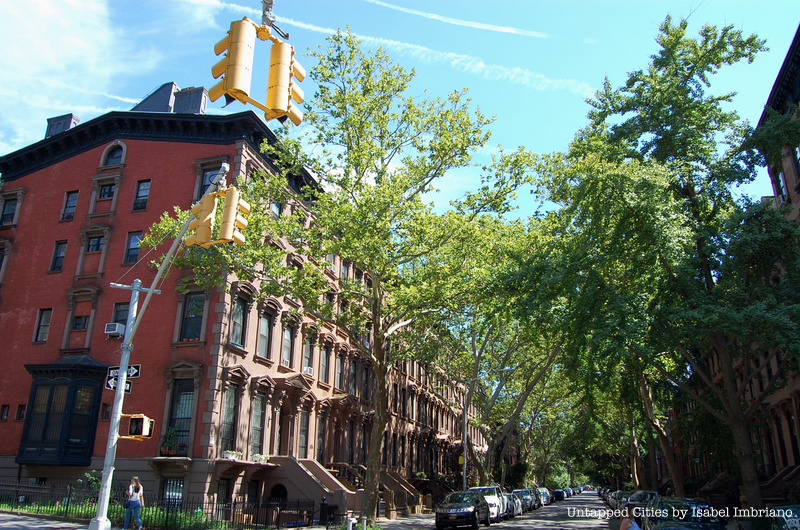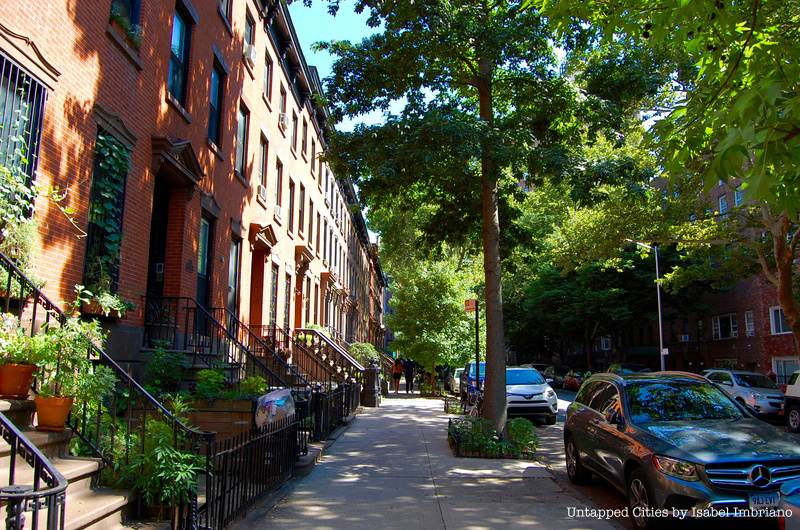Cool Streets
Dekalb Avenue

The New York Times calls Dekalb Avenue a “genuine restaurant row,” meaning there’s plenty to do, see and, most importantly, eat. It’s a commercial thoroughfare for the neighborhood, but still far enough from the subway that it feels slightly more remote. Although South African restaurant and neighborhood staple, Madiba, shuttered earlier this year due to financial issues, there are still a plethora of places to wine and dine at. As you walk east along the street, you’ll come across a variety of shops, cafes and restaurants, including the aforementioned Evelina and Maison May (formerly ICI).
South Oxford Between Lafayette and Dekalb

The Fort Greene Historic District encompasses over one thousand buildings and is distinguished by its spectacular, multi-story brownstone and rowhouses that were built in the Italianate, Queen Anne and Neo-Grec styles. While Brooklyn is decorated with plenty of brownstones, the ones in Fort Greene are unique in that they possess detailed embellishments that have been kept intact beautifully since they were built between 1840 and 1890. In fact, of the numerous tree and brownstone-lined streets of New York City, the best across the five boroughs is located on Fort Greene’s South Oxford Street, between Lafayette and Dekalb Avenues, according to architectural historian Francis Morrone. Read more about the Fort Greene Historic District here.
Adelphi Street
While the Fort Greene historic district is dotted with many wooden houses, you will find the two oldest on Adelphi Street between Lafayette and Green Avenues. According to the Landmarks Preservation Commission’s designation report, the detached pair of transitional Greek Revival/Italianate houses at 329 and 331 Adelphi Street that were built together around 1848 are the two oldest wooden houses in the district. Both buildings were originally one and a half stories with peak-roofs. The report notes that the most notable features of each house are the four fluted doric columns on their porches.





